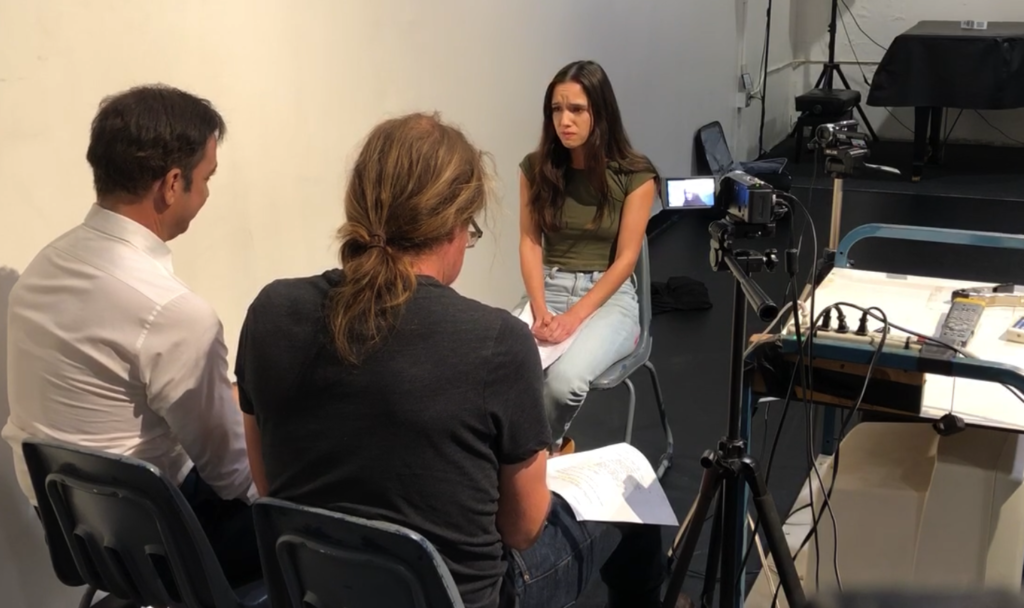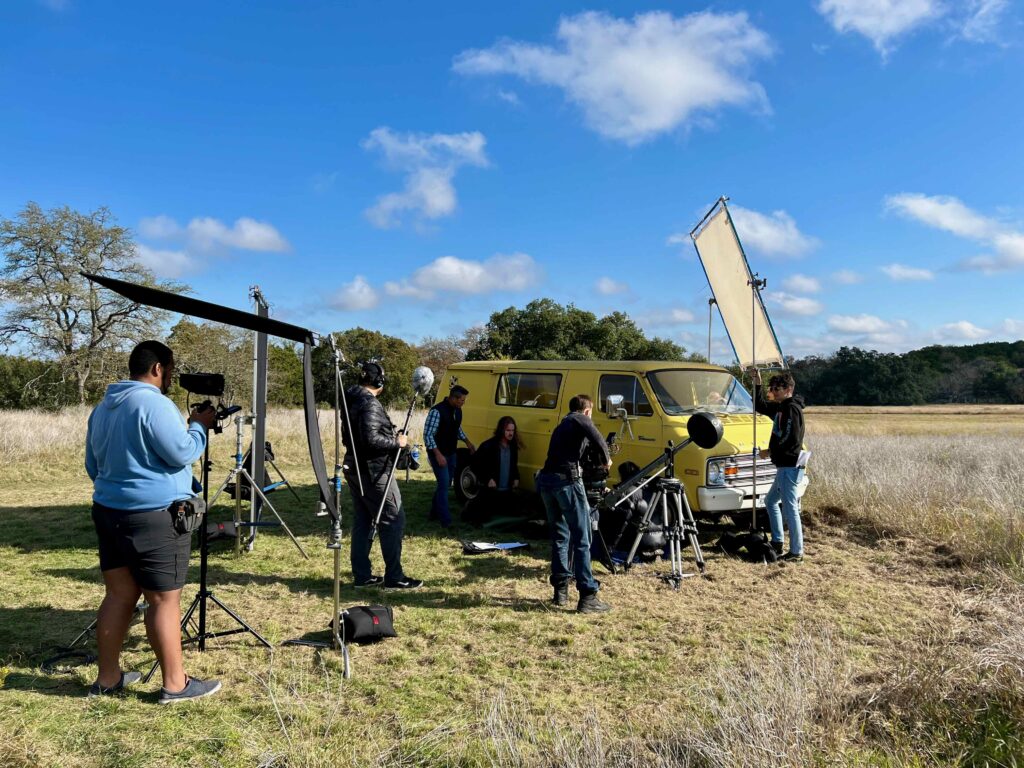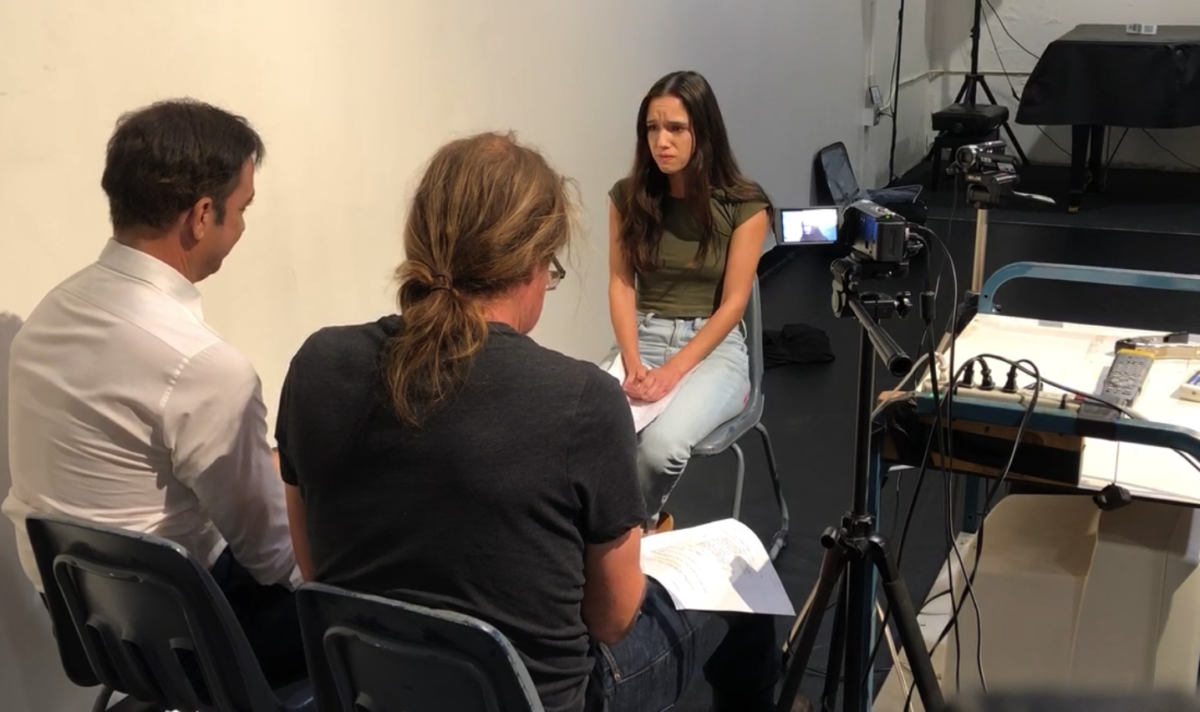As I mentioned last week, I decided to take an idea that I originally had for a short story and convert it into a short film. My friend Jeff Weber would produce and star in the film. We found our other two actors, Melanie Elise and Henry Mouat, in an acting workshop run by our friend Marco Perella.

Now that casting was complete, we turned our attention to pre-production.
Without proper pre-production you cannot bring your vision to life.
The foundation for a successful film lies in the pre-production stage. Whether you’re a seasoned filmmaker or a budding enthusiast, understanding the significance of pre-production is crucial for the smooth execution of your short film.
Developing The Idea:
Every great film begins with a compelling idea. I always suggest that writers take the time to brainstorm and explore different concepts, themes, and narratives that resonate with them. Refine your idea by considering its uniqueness, emotional impact, and visual potential. Once you have a clear vision, create a logline or a short synopsis that succinctly communicates the essence of your film. This will serve as the foundation for the subsequent stages of pre-production.
“They Never See It Coming” was an idea that I originally planned as a short story. When Jeff Weber and I decided to make a short film I decided to write it as a screenplay instead. I keep a file on my computer of various ideas, thoughts and notes. I categorize all of these ideas within folders by name of the story or screenplay. I pulled out my notes for the short story version of “They Never See It Coming” and simply spent time revising those notes moving the ideas away from the short story version and embracing a more visual film version.
Crafting the Screenplay:
The screenplay is the backbone of any film, including short films. You should develop your idea into a fully fleshed-out script that captures the story’s essence, characters, dialogue, and structure. Pay attention to pacing, character arcs, and thematic elements. Seek feedback from trusted peers or mentors to refine your script further. Remember, a strong screenplay lays the groundwork for an engaging film.
I wrote the screenplay for “They Never See It Coming” fairly quickly. This was mostly due to the fact that I had the entire idea already organized in my head. I knew the beginning and ending of the story. I simply had to review my original notes on the idea in order to flesh out the meat of the story. I sat down in a coffee shop to work out the details and a few cups of coffee later I had the finished script.
Assembling the Team:
Collaboration is key in filmmaking. Identify the key roles needed for your production, such as director, producer, cinematographer, production designer, and editor. You need to reach out to individuals who share your passion and align with your creative vision. Discuss their availability, experience, and commitment to the project. Building a reliable and enthusiastic team will ensure a smooth production process.
I had wanted to work with director of photography Robert Matthews on a project but we just hadn’t found the opportunity. With “They Never See It Coming” our schedules aligned and he was my first choice for Director of Photography. Robert and I began developing ideas for the look of the film. Robert is immensely talented and I knew he would bring creative and innovative solutions on how to shoot the film.
For makeup I chose my longtime collaborator Leslie Alexander. I knew Leslie would make everyone look amazing and I knew that she could also handle all of the blood FX which makes her doubly valuable to the team.
I chose Kenny Hada for sound. Kenny had his work cut out for him because the day of the shoot was massively windy. But Kenny was prepared and he recorded the sound flawlessly.
My wife Dee-Dee performed the role of script supervisor and another creative partner of mine, Andrew Lamping, would assist in the editing and final sound mix.
Budgeting and Scheduling:
You must determine the financial resources required for your short film and create a realistic budget. Consider expenses such as equipment, location fees, talent fees, production design, and post-production costs. Simultaneously, develop a comprehensive shooting schedule, considering factors like location availability, actor availability, and any time constraints you may have. Keep in mind that meticulous budgeting and scheduling will help you avoid unnecessary challenges during production.
We were fortunate in that we had locations donated for free so the bulk of our budget was crew and food.
Location Scouting and Production Design:
You need to scout locations that align with your script’s requirements and aesthetic. Look for settings that visually enhance your story and offer logistical convenience. Additionally, collaborate with a production designer to create the visual atmosphere of your film, including set design, props, costumes, and overall aesthetics. Proper attention to location and production design will elevate the production value of your short film.
We were fortunate to find an amazing restaurant for our opening scene as well as a beautiful ranch to use for the majority of our production. So the bulk of our budget was for food and crew.

Casting and Rehearsals:
Selecting the right actors is crucial to bringing your characters to life. Conduct auditions or seek recommendations from casting agencies. Screen and shortlist candidates based on their suitability for the roles. Organize rehearsals to allow the actors to immerse themselves in their characters and develop chemistry. Through rehearsals, you can refine dialogue delivery, explore blocking, and build a cohesive team.
I set up a table read with Jeff Weber, Melanie Elise and Henry Mouat. We discussed ideas, tried different takes on the characters and hammered out exactly the type of performances we wanted to achieve the day of the shoot.
Technical and Creative Decisions:
I discussed the technical aspects of the film with my cinematographer and we made creative decisions about the visual style, camera movements, and lighting techniques. We decided to shoot in the 2.35:1 aspect ratio.
I also collaborated with the sound designer to ensure the audio elements align with the emotional tone of your film. These decisions will always shape the overall mood and impact of a short film and “They Never See It Coning” was no exception.
Leslie Alexander, who did makeup and FX, did blood and makeup tests that she recorded with her iPhone. She sent me her ideas, which were spot on for what we needed.
Pre-production is the blueprint that sets the stage for a successful short film. By investing time and effort into developing the idea, crafting a strong screenplay, assembling a dedicated team, and making informed decisions, we hoped to navigate the pre-production stage with confidence.
Next week we’ll talk about the actual days of production.
Until then… cheers.


